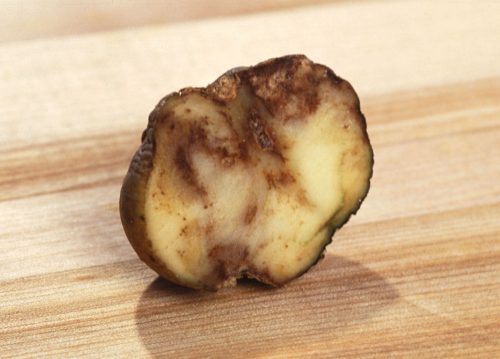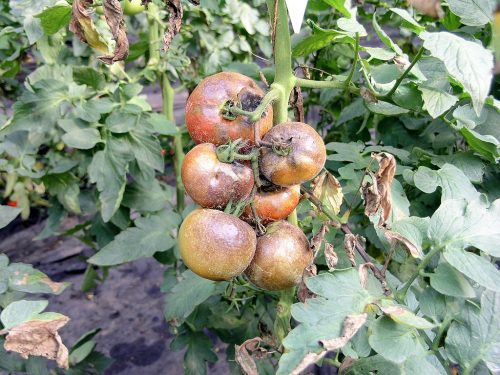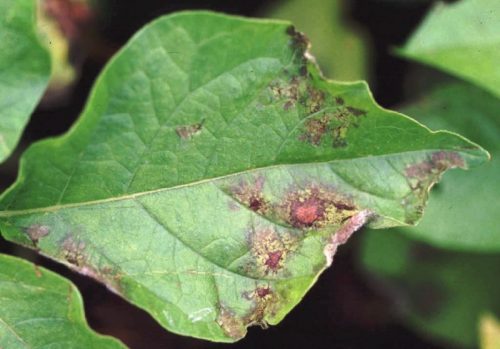Phytophthora recognizable by the black spots in on the foliage of potatoes and tomatoes.
Also known as:
Pink rot (potato, carrot)
Late Blight (potato, tomato)
Phytophthora root rot (rhododendrons, azaleas, rose)
Phytophthora (Phytophthora infestans). The characteristic black spots in on the foliage of potatoes and tomatoes is caused by a water fungus. Water fungi are fungal microorganisms. Phytophthora hibernates on leftover plant debris and in the soil. Infection occurs through insects, spores carried with wind and rain, and splashing water. During periods of summer hot and humid weather, Phytophthora can cause extensive damage in a short period of time. In rhododendrons and azaleas, phytophthora causes curling leaves and discoloration of leaves, bark and the roots. Phytophthora can cause root rot in roses that have only been planted for a few months. Roses grown in very wet soil or substrate are especially susceptible to infestation. Pythium root rot causes similar damage.
In silver firs (e.g., Nordmann fir), Phytophthora causes root rot, causing the tree to dry out and die.
Phytophthora ramorum causes SOD (Sudden O
Where to find

-
- Potato
- Tomato
- Ornamental garden including:
- Clematis
- Lavender
- Rhododendron, azalea
- Rose
- Wisteria
- Birch
Prevention
Crop rotation is necessary. Provide enough space between the rows of potatoes so that the wind has free play: the po
Do not give too much nitrogen as this will increase leaf production and thus the risk of infection.
Tomatoes can also be aerated well.
In professional fruit growing, the length of time the leaves remain wet (wet-leaf period) and the temperature are monitored. The combination of both is contributory to the development of infections.


